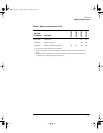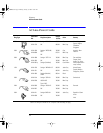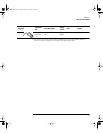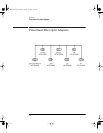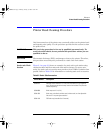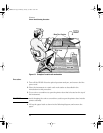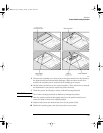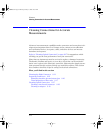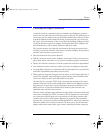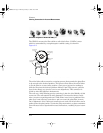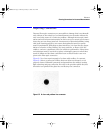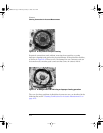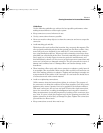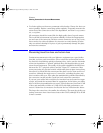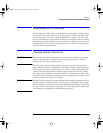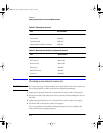
6-11
Reference
Cleaning Connections for Accurate Measurements
Choosing the Right Connector
A critical, but often overlooked, factor in making a good lightwave measure-
ment is the selection and care of the fiber-optic connector. The differences in
connector types are mainly in the mechanical assembly that holds the ferrule
in position against another identical ferrule. Connectors also vary in the pol-
ish, curve, and concentricity of the core within the cladding. Mating one style
of cable to another requires an adapter. Hewlett-Packard offers adapters for
most instruments to allow testing with many different cables.
The system tolerance for reflection and insertion loss must be known when
selecting a connector from the wide variety currently available. Some items to
consider when selecting a connector are:
• How much insertion loss can be allowed?
• Will the connector need to make multiple connections? Some connectors are
better than others, and some are very poor for making repeated connections.
• What is the reflection tolerance? Can the system take reflection degradation?
• Is an instrument-grade connector with a precision core alignment required?
• Is repeatability tolerance for reflection and loss important? Do your specifica-
tions take repeatability uncertainty into account?
• Will a connector degrade the return loss too much, or will a fusion splice be re-
quired? For example, many DFB lasers cannot operate with reflections from
connectors. Often as much as 90 dB isolation is needed.
Over the last few years the FC/PC style connector has emerged as the most
popular connector for fiber-optic applications. While not the highest perform-
ing connector, it represents a good compromise between performance, reli-
ability, and cost. If properly maintained and cleaned, this connector can
withstand many repeated connections.
However, many instrument specifications require tighter tolerances than most
connectors, including the FC/PC can deliver. These instruments cannot toler-
ate connectors with the large non-concentricities of the fiber common with
ceramic style ferrules. When tighter alignment is required, HP instruments
typically use a connector such as the Diamond HMS-10, which has concentric
tolerances within a few tenths of a micron. HP then uses a special universal
adapter which allow other cable types to mate with this precision connector.
book.book Page 11 Monday, January 31, 2000 10:34 AM



